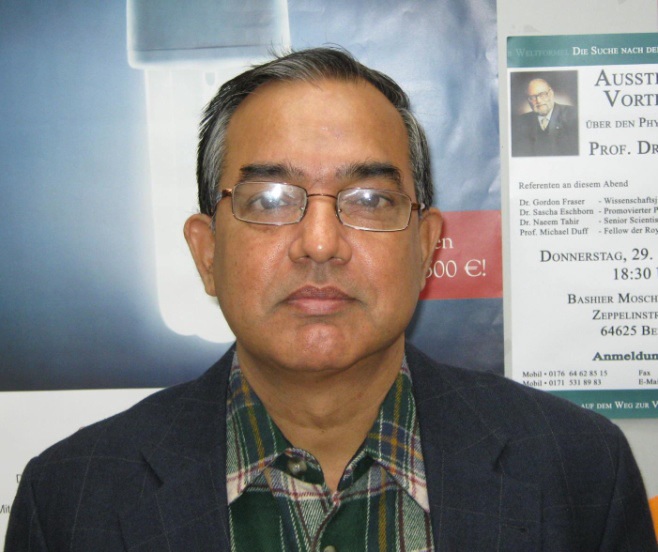Ethnic Conflict Management in India
India’s relative success as a democracy and federalism in ensuring relative political order and legitimacy for over seven decades is adequately studied in the existing literature, and an exemplar for countries in the global South as well as post-conflicts states in the world. India did not face so far any territorial crises resulting in disintegration although the forces of secessionism remain only much subsided now than before. Paradoxically, the politics of secessionism in India is not something of an outline to the ongoing democratic political process. In the normal conduct of politics, the politicians routinely indulge in secessionism of sorts in various ways: using social and cultural divisions among the people, creating fissures in social relations, and building on them for vote-gathering; maintaining a hidden liaison between the underground secessionists and militants, and the over ground political parties and leaders; encasing it very often before elections by causing political violence and so on.

Harihar Bhattacharya
University of Burwan, West Bengal
The forces of identity politics of various brands (at macro and micro levels) are exclusive, socially and culturally speaking, and therefore are not always above board. But the real strength of India’s political processes lies in managing things between identarian, exclusive, and often separatist (including elements of secession as a low-key concept), and a rational space and basis for negotiation for peace and power-sharing in favour of political order and legitimacy. This has so happened by making use of the constitutional resources, and their reforms, if needed, and by innovating institutional mechanisms to bind the conflicting parties around a consensus within the limited time-scale. The political equilibrium thus born is dynamic and shifting. To put it in the language of dynamic neo-institutionalism, it is an interactive process of actors, context, and institutions, or structures that serves to produce a dynamic political equilibrium
The resolution of ethnic conflicts in India since 1950s in favour of state and sub-state creation has never meant a zero-sum game. This has produced further conflicts calling for federal and other solutions. The newly created micro-minorities, not always amenable to territorial solutions, have demanded better protection of their cultural identity as per the constitutional The official reports of the Commissioner of Linguistic Minorities in India (50th Report 2013) provide us with an abysmal picture of the absence of constitutional safeguards and neglect of minority languages at the grassroots of the system. The non-territorial minorities in Indian States are in millions, but in the absence of any consociational redress they remain grossly unrepresented in India’s democracy.
The politics of secessionism in India is an interactive process of actors, context, and institutions, or structures that serves to produce a dynamic political equilibrium.
Nonetheless India’s success as a whole can hardly be underestimated. Three major processes of federalization, democratization and devolution have combined in phases, gradually but steadily, to produce territorial re-sizing of India’s vast and complex territories since the early 1950s—1956, 1960, 1966, 1972, 1987, 2000 and 2014—to correspond, by and large, to cultural markers of the people. The constitutional provisions (Articles 2 & 3) and the near unilateral powers to the Union government in making and remaking of the territories of the States, i.e., a lot of cutting and pasting, if you like, and naming and renaming the States including creating many sub-State political structures in the North East, in particular, may appear to be grossly anti-federal going by the classical models of federalism. But, in India, they have proved to be most federal.
Since 1950 India has taken the risk of introducing democracy on the basis of universal adult suffrage in conditions not usually considered congenial to democracy: mass poverty; massive illiteracy, underdevelopment, and above all complex ethnic diversity. The latter often provides for the potent basis of counter-mobilization for separation and secession. No wonder, India’s imminent ‘balkanization’ was predicted in the 1960s. As I have argued elsewhere (Bhattacharyya 2015), India has grappled with two opposed problematics: the diversity-problematic and the democratic problematic. The first one concerns identity issues, and have been amenable to federal solutions, in most cases. The second concerns the issues of redistribution as a response to distributional crises. They are different but not unlinked. In India, democracy has played the second fiddle to accommodation of diversity via federalism for political order and stability. While this has helped transform the rebels into stake holders, much of democratic functioning has been seen shifted to the States with differential outcomes. Decentralization meant in India as devolution from the States to the levels below has since 1992 been effective in ensuring greater popular participation and some political empowerment. But constitutionally, decentralized bodies in India are dependent on the State governments for powers and resources, for local government is a State competence.
By contrast, ethnic conflict management in the North East of India has followed a somewhat different but difficult trajectory. North East is a region (with eight Indian States) that attracts special attention for the following reasons: This is India’s geo-strategic regions with long international borders with China, Bangladesh, Myanmar and Bhutan. Significant portions of tribal peoples live here, which have common ethnic affinity across the borders. There are four tribal-dominated States in the region of which three are Christian-dominated. The region also contains some asymmetric states with special powers. The region is considered of late as the land bridge to India’s new foreign policy drive of Act East Policy (2014-). The region has faced a crisis in the wake of the onset of India’s neo-liberal reforms that have done away with much of the liberal funding via the Planning Commission (now abolished). The Special Category Status enjoyed by all the States in the region has been withdrawn too. The detailed survey of elites in the region shows their apprehensions by the turn of events.
Federalism, democracy and decentralization in this region have had limited purchase. And yet, once known as ‘India’s insurgent country’ the region has shown since the 1990s a far better picture of ethnic conflict management and governance. For many decades until the 1990s, the region remained like an internal civil war zone: persistent ethnic rebellions, political violence and the deployment of central security forces as an aid to civil order were the routine. Thus, both federalism and democracy have had a limited purchase in this region. But an innovative institutional mechanism has proven effective in resolving ethnic conflicts. This is known as ethnic peace accord, bipartite and or tripartite
Ethnic peace accord is an innovative institutional mechanism that has proven effective in resolving ethnic conflicts in the north-east region, despite the fact that both federalism and democracy have had a limited purchase in this region
The Nagas have shown the way in 1947 with the signing of the Naga-Hydari Accord signed between the Government of India and the Naga rebels for negotiated peace, and protection of Naga rights followed by more for the Nagas, the Mizos, the Bodos (1993 & 2003) and others till 2015 (Bhattacharyya, 2018, 55-57). This instrument has played an important role in transforming the rebels into stake holders in the region. Typically such accords contain provisions for recognition of the ethnic groups in conflicts. Second, it promises institutional protection of their identity and culture. Thirdly, the ethnic demands have been presented in the rhetoric of self-determination but were accepted. Fourth, they have bound the signing parties to abide by the terms. Finally, the government has pledged itself to institutionalise the terms and conditions for offering a territorial government by constitutional amendments and or legislations. This has been followed by elections to form such bodies (state government or sub-state tribal Council (autonomous). In both federal asymmetry and sub-State federal asymmetry have been ensured.
Ethnic peace accords have been signed for specific non-territorial claims too. The available official and unofficial reports and data strongly suggest that while the Bodo ethnic conflicts remain to be finally resolved, the region as a whole has shown since the 1990s much less violent, more political order and stability, and better records of development and governance. The performance of Nagaland in matters of the rule of law was seen as above the all-India average (Malhotra 2014). Most of the States in the region except Tripura was found to have higher records of the rule of law than that of India’s advanced States. The detailed empirical studies (Bhattacharyya 2023) of sub-State level asymmetric governments (Tribal Autonomous District Councils) are a proof that territorialization of ethnic conflicts can work sometimes. Even an odd case of the Bodoland Territorial Authority (2003) in Assam has given birth to some development and a low level of governance which do not match though with its disastrous records of persistent ethnic violence. But then it is an exception.
In conclusion, I would highlight the following. First, despite rounds of states reorganization and state and sub-state formation in the region based on tribal ethnicity, tensions between tribal ethnicity and territoriality remains (Bhattacharyya 2019a). Second, the region’s experiment with sub-state level tribal self-governance has mostly worked which has played in important role in ethnic conflict management. Third, the Bodoland experiment provides an example when institutions sometimes do not work. Third, until the 1990s, both federalism and democratization had a limited purchase in the region, but since the 1990s, the states have demonstrated better performance records in terms of development and the rule of law. The Special Category Status of the States has been withdrawn, but their constitutional asymmetric status remains, and the fund flows from the Centre have multiplied.
Copyright: © (2022) Harihar Bhattacharya

